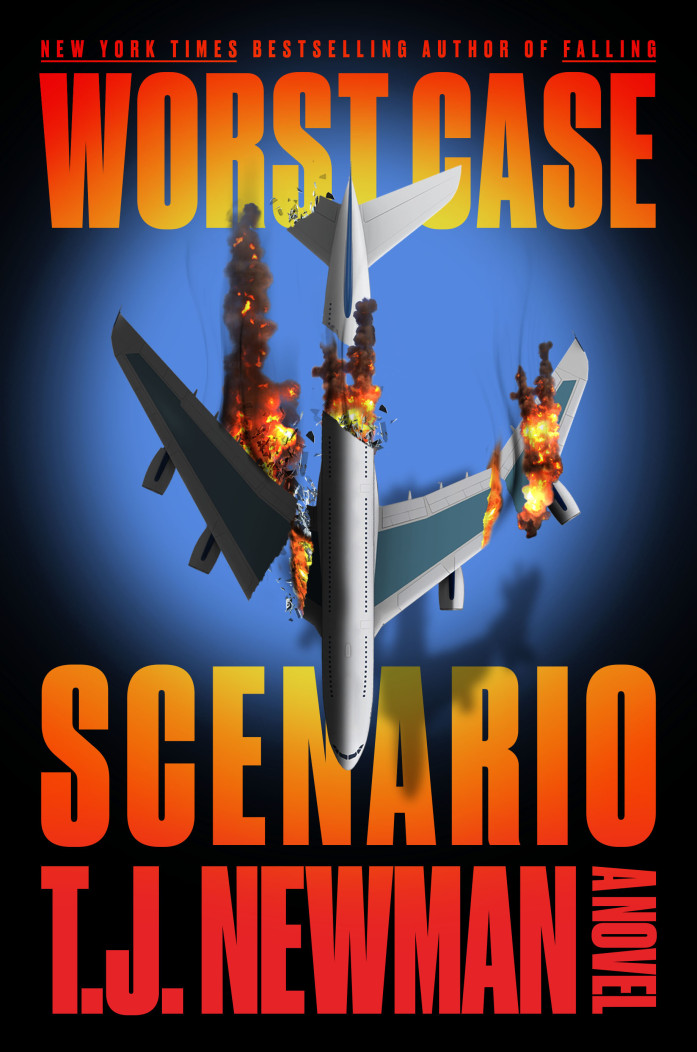
What Would Happen if a Commercial Plane Crashed Into a Nuclear Reactor?
LOS ANGELES, CA / ACCESSWIRE / August 17, 2024 / What Would Happen if a Commercial Plane Crashed Into a Nuclear Reactor?

There are 94 nuclear reactors in the United States. How close is the nearest one to you?
The International Nuclear Event Scale has seven levels, with Level 7 being a "Major Accident." There are only two of these on record: Fukushima and Chernobyl. There has never been a Level 8.
Until now.
The U.S. has 94 operational nuclear power reactors, many within an hour drive of heavily populated cities such as Chicago, Dallas/Fort Worth, Miami, and even Washington, D.C.
New York Times bestselling author TJ Newman lives in Phoenix, just 45 miles east of the Palo Verde Station, the largest nuclear power plant in the country.
Like her first two bestsellers, TJ Newman's new novel Worst Case Scenario, out now, began with a simple question: What if a commercial airliner-flying at 500mph, with a full tank of fuel and filled with nearly 300 people-crashed into a nuclear power plant?
Newman writes thrillers that keep readers up at night, but researching the book gave the author nightmares of her own.
According to the Nuclear Regulatory Commission, "the effect of an aircraft of sufficient weight, traveling at sufficient speed, crashing at a nuclear powerplant site may result in physical damage and disruption to the plant to the extent that damage to the reactor core damage and release of radioactive material from the reactor core may result."
"I kept asking myself why isn't this a bigger story?" Newman says. "Why don't more people know about this? Why are we not taking steps to prevent this from ever happening?"
Location. For design and distribution reasons, nuclear power plants are located near major populated areas. So if something did go wrong, it wouldn't happen in an isolated environment that could be easily contained. It would happen in millions of people's backyards.
Adding to the risk, nuclear plants are built near large bodies of water, as water is required for the power generation process. If there's a breach and that water source is contaminated, the level of impact would be magnified ten-fold as lakes, rivers, and their tributaries would spread the radioactive material further, contaminating not only the air, but the drinking water and soil. What we breathe, what we drink, what we eat, it would all become deadly.
Evacuation. So people would run. Even if they got out of the radiation zone quickly enough, where would they go? In Worst Case Scenario, the plane crashes into a nuclear power plant in Minnesota, at the northern tip of the Mississippi River, the primary body of water flowing down the center of the country. 20-30 million people rely on the river and its tributaries for fresh water, and most of the land in the region is used for agriculture. People would have to flee to the coasts, where there's a higher cost of living (and people would have lost all earning potential and whatever land equity they might have had). And coastal cities are already facing their own real estate scarcities and affordable housing crises along with an untenable population of unhoused that, even now, no one has a solution for. We'd be looking at an unprecedented refugee crisis of Americans on American soil.
Radiation. For people at ground zero, the brave first responders and those working at the plant that day, "The physiological effects of acute radiation poisoning are about as horrifying as you can imagine," Newman says. Nausea and vomiting. Blisters and ulcers. Organs literally melting into soup inside the body.
And for everyone else in the area, it would be the start of their own "personal doomsday clock," as Newman calls it. "Radiation is invisible. You don't know how much you breathed, drank, ate. So, you'd wait weeks, maybe even years, every day wondering: When is the cancer diagnosis coming?"
Psychology. What does it do to a person's psyche to know there's invisible radiation all around you-in the air, in your water, in your food-that will someday kill you? And on top of that, people would have lost their loved ones, their homes, their livelihoods. A widespread mental health crisis would be inevitable and the ripple effects of how that would manifest would be incomprehensible.
The impact of such loss and devastation would set off an economic tsunami across the globe, sending the world into chaos.
Worst Case Scenario. A former flight attendant, Newman's first two novels-Falling and Drowning: The Rescue of Flight 1421-were both New York Times bestsellers and Amazon Best Books of the Year. Her stories are high-octane page-turners that invoke smart action films like Speed and Apollo 13.
Worst Case Scenario has already been named an Amazon Best Book of the Month, a Time and Parade magazine Best Book of the Month, and a People Best Book of the Week. James Patterson has declared it his favorite thriller book this year.
But ultimately, Newman says her new book is not meant to scare readers, it's meant to entertain and inspire. All three of her novels share one common theme: ordinary people put in extraordinary circumstances who must rise to the occasion.
She fundamentally believes in the goodness of people and in our ability to rally together to overcome even the most dire of situations. "This book is about the ingenuity, resilience, and resourcefulness of everyday heroes who meet the moment together."
And that belief in her fellow man is what now lets her sleep at night.
Worst Case Scenario is on sale now everywhere books are sold. T.J. Newman is available for interviews.
Contact Information
Ryan Coleman
Director
ryanccoleman@gmail.com
3234495880
SOURCE: TJ Newman
View the original press release on newswire.com.
